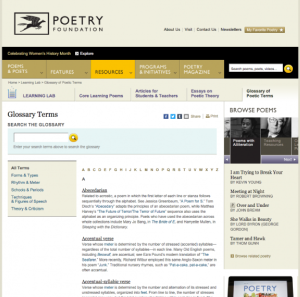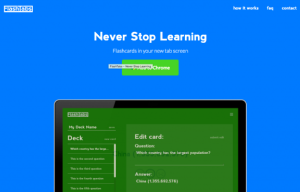Research and Education
Back to Top
|
 |
|
San Francisco Symphony: Keeping Score in the Classroom
|
Social studies |
|
In the TV documentary series, Keeping Score, master conductor Michael Tilson Thomas and the San Francisco Symphony delved into the lives and works of eight major composers. The effort has been preserved on the Keeping Score in the Classroom website, where educators will find much to appreciate in the Lesson Plan Library. Here readers can scout 171 distinct lesson plans, running the gamut from expositions of Beethoven's life story to a history lesson about Abraham Lincoln, as told from the perspective of Aaron Copland. Educators may like to filter the findings by Grade Level (PK-2, 3-5, 6-8, 9-12), Subject (English Language Learner, Foreign Language, Language Arts, Life Sciences, Math, Social Studies, and others), or by a selection of dozens of Tags, such as America, Animals, Dance, Song, and many others. Meanwhile, readers will also find a hearty selection of Lesson Ideas for Any Music within the Music and Your Curriculum section. Together, these excellent lesson plans can provide educators from a range of subjects with fresh and innovative ways to enliven their classrooms using the power of music. [CNH] |
|





|
|
 |
|
Mindful Teachers
|
Health |
|
The Mindful Teachers website is virtually loaded with resources for educators who would like to integrate mindful awareness into their classrooms, their careers, and their lives. Created by mindfulness practitioner and English as a Second Language (ESL) teacher, Catharine Hannay, the site includes an excellent blog, tabs dedicated to the Benefits of Mindfulness, Expert Interviews, and Self-Care for Teachers, and a section dedicated to Posters & Quizzes. Additionally, many teachers will appreciate the Mindfulness Activities and Teaching Resources section, which is chockfull of exercises and lessons that teach mindfulness, compassion, and social-emotional skills. For those who want more, there are also links to external mindfulness resources from around the web. [CNH] |
|





|
|
 |
|
Access Islam
|
Religion |
|
Access Islam, an educational tool produced by WNET Channel Thirteen in New York City, is a tremendous resource for educators looking for ways to convey the rich history and practices of Islam to students in the fourth through eighth grades. While RealPlayer is required to watch the video segments, which originally aired on the PBS series, Religion & Ethics NewsWeekly, including documentary footage of Muslim Prayer, Somali Muslim in Maine, and other fascinating topics, most of the resources are available without any extra applications. Readers may like to begin with the excellent Timeline, which begins with the life of the prophet Muhammad (560-661), moves through the great Muslim dynasties of the Umayyads, the Abbasids, the Sejuks and the Fatimids, and the Ottoman Empire, before culminating in the Modern Era. Educators will find much to appreciate in the ten lesson plans listed on the site, including expositions on Ramadan Observance, The Five Pillars of Islam, and the Hajj: Journey to Mecca, among other topics. The site also features an excellent, alphabetically organized Glossary. [CNH] |
|





|
|
 |
|
EDSITEment: Mapping Colonial New England
|
Social studies |
|
This rich and complex treatment of colonial New England through the use of maps will take high school students on a historical journey into the actions and ideas that shaped the early United States. The Lesson itself includes an excellent introduction, a list of Guiding Questions, clear Learning Objectives, some basic Background information, Preparation Instructions for educators who would like to integrate the lesson into their classroom, an overview of Lesson Activities, tools for Assessment, and ideas for Extending the Lesson. Compiled by professors at the City College of New York and built to cover two social studies classroom periods while developing skills in critical analysis, historical analysis, maps, primary resource use, and other areas, this lesson contains everything necessary for an excellent peek into the colonial America. [CNH] |
|





|
|
 |
|
 |
|
Inside Higher Ed: Community Colleges
|
Vocational Education |
|
Inside Higher Ed's coverage of community colleges offers an insider's perspective on the trends and developments taking place within two-year colleges across the country. Readers may like to start with the landing page, which usually features a recently published survey, a recently published booklet, community college-related posts from the Inside Higher Ed blog, and popular articles from the archives, as well as sidebar listing jobs on community colleges around the country. Readers may then like to scout the latest in Section Topics such as Curriculum, Enrollment, Finances, Leadership, and Views. For example, a recent article in the Leadership section profiles City Colleges of Chicago Chancellor Cheryl Hyman, who has been commended for graduation-rate improvements, but faces challenges from faculty and other difficulties. [CNH] |
|





|
|
 |
|
ConSource: The Constitutional Sources Project
|
Social studies |
|
The Constitutional Sources Project (ConSource) seeks to revolutionize how people experience history by "democratizing access" to the source materials of the U.S. Constitution, such as related letters, journals, newspapers, articles, and speeches. Readers may like to begin by perusing the Blog, which presents newly uploaded materials and accessible scholarly writings by ConSource staff. From there, the Documents section is well worth a visit. Here readers will find links to the United States Constitution, the Bill of Rights, the Declaration of Independence, constitutional convention records, and other primary documents that have been central to American history and culture. The Constitutional Index, meanwhile, sorts the U.S. Constitution by section, amendment, and clause, making for an organized and educational read. [CNH] |
|





|
|























